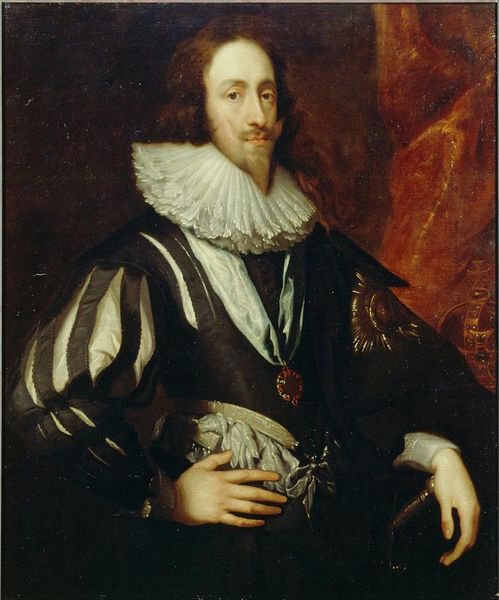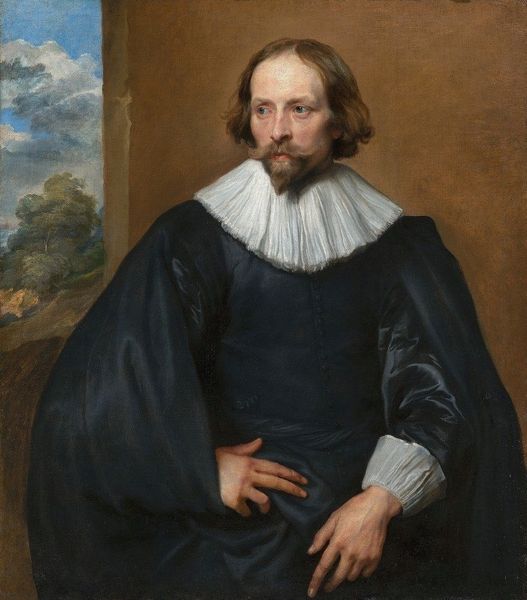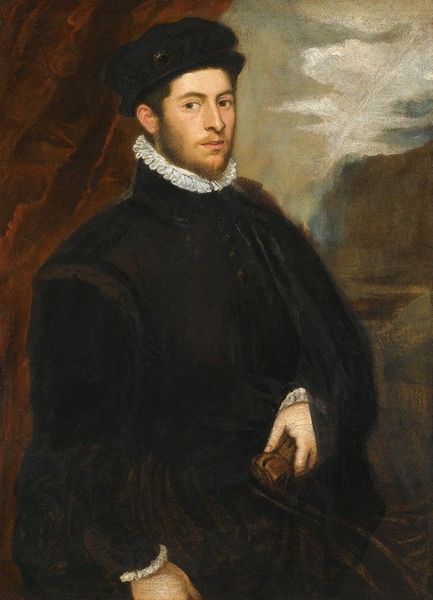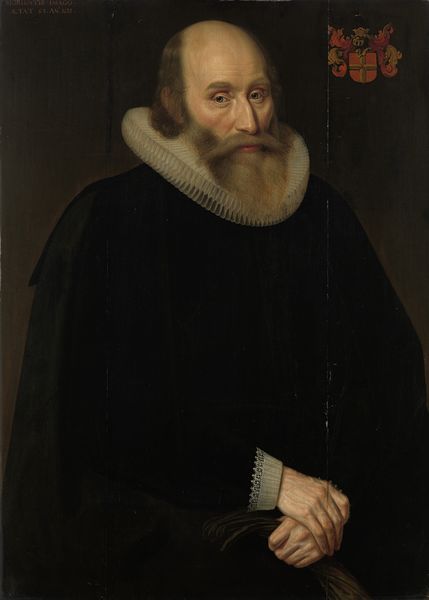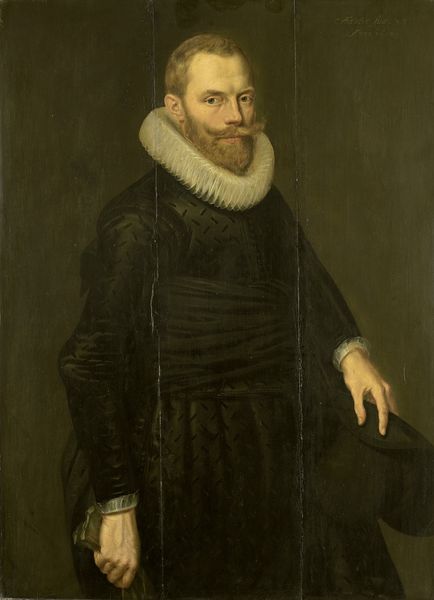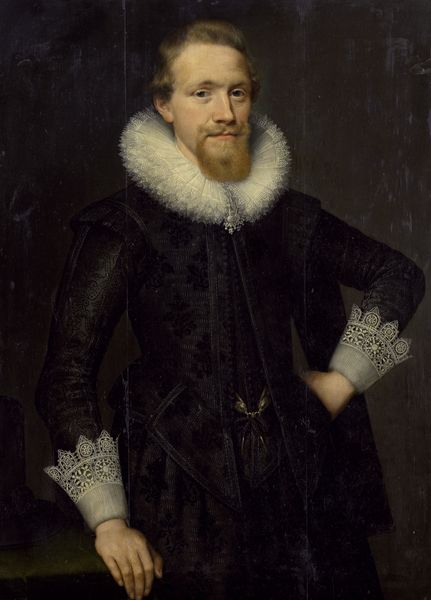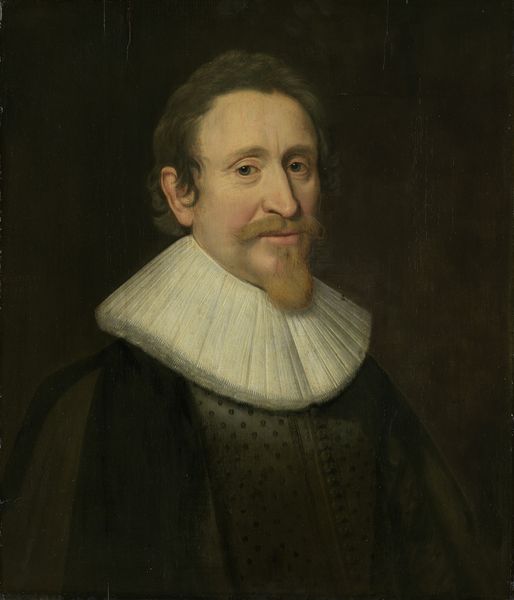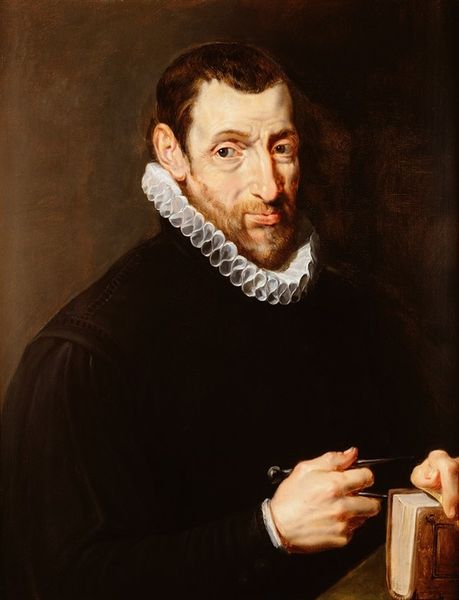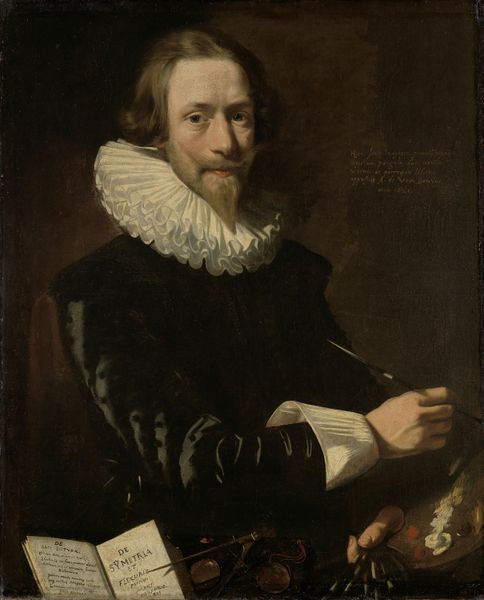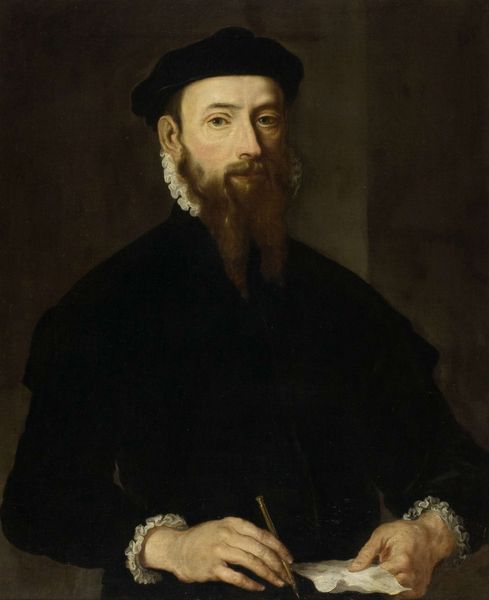
oil-paint
#
portrait
#
figurative
#
baroque
#
oil-paint
#
oil painting
#
flemish
#
history-painting
Copyright: Public Domain: Artvee
Anthony van Dyck painted Thomas Howard, Second Earl of Arundel, using oil on canvas. The smooth application of oil paint allows for capturing the opulence of the Earl's garments and the intricate lace collar. But the real story is the pigment itself, which would have been imported from far and wide – ultramarine from Afghanistan, for instance. The mining, refining, and trading of these materials was a globalized business even at this early date, one driven by aristocratic consumption. Van Dyck's skill depended not only on his technical ability with a brush, but also on this structure of extraction and commerce. Consider also the canvas itself: woven from linen, it speaks to the labor of flax cultivation, spinning, and weaving. The artist's skill is evident, but it's equally a testament to the countless hours of work, often unacknowledged, that made its creation possible. Understanding these material origins allows us to appreciate the full complexity of this portrait, blurring the lines between art, craft, and social history.
Comments
No comments
Be the first to comment and join the conversation on the ultimate creative platform.

